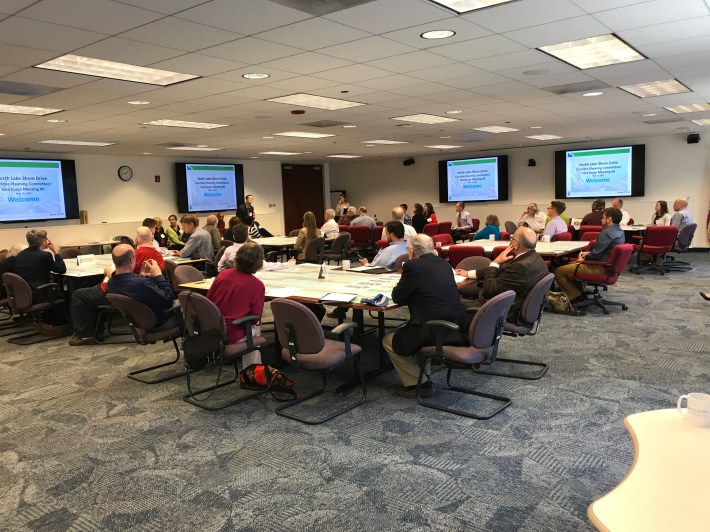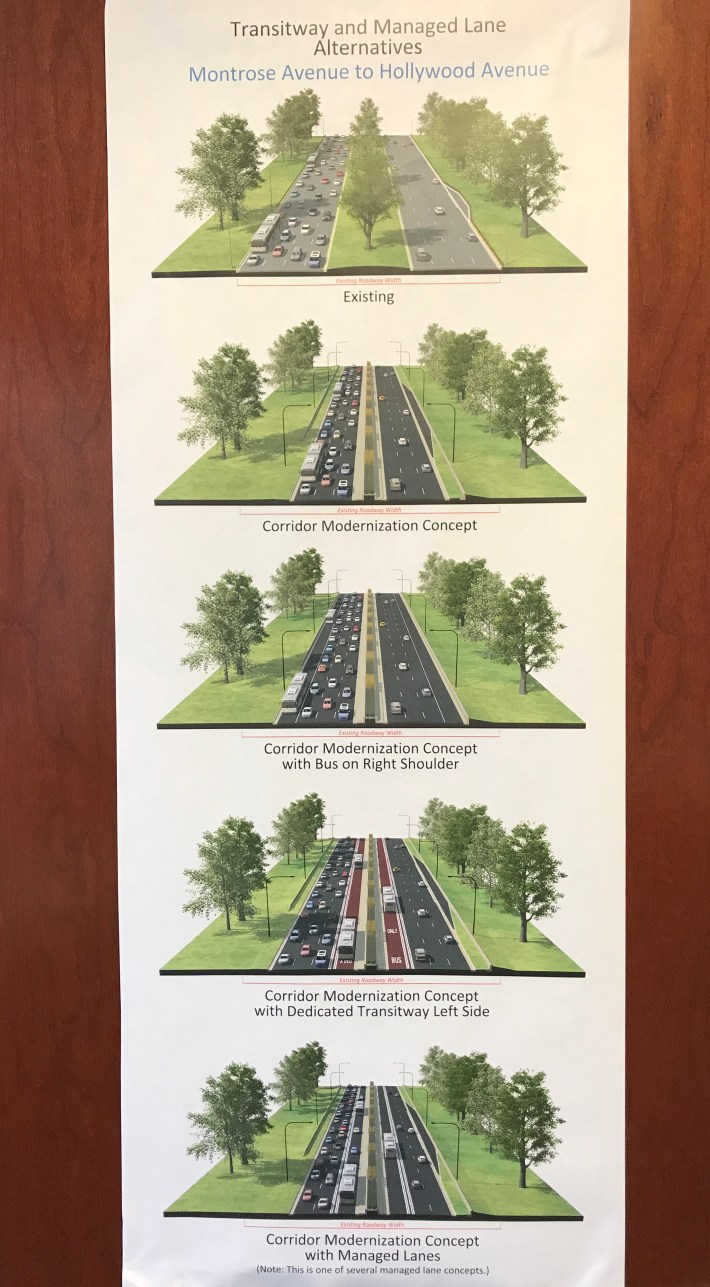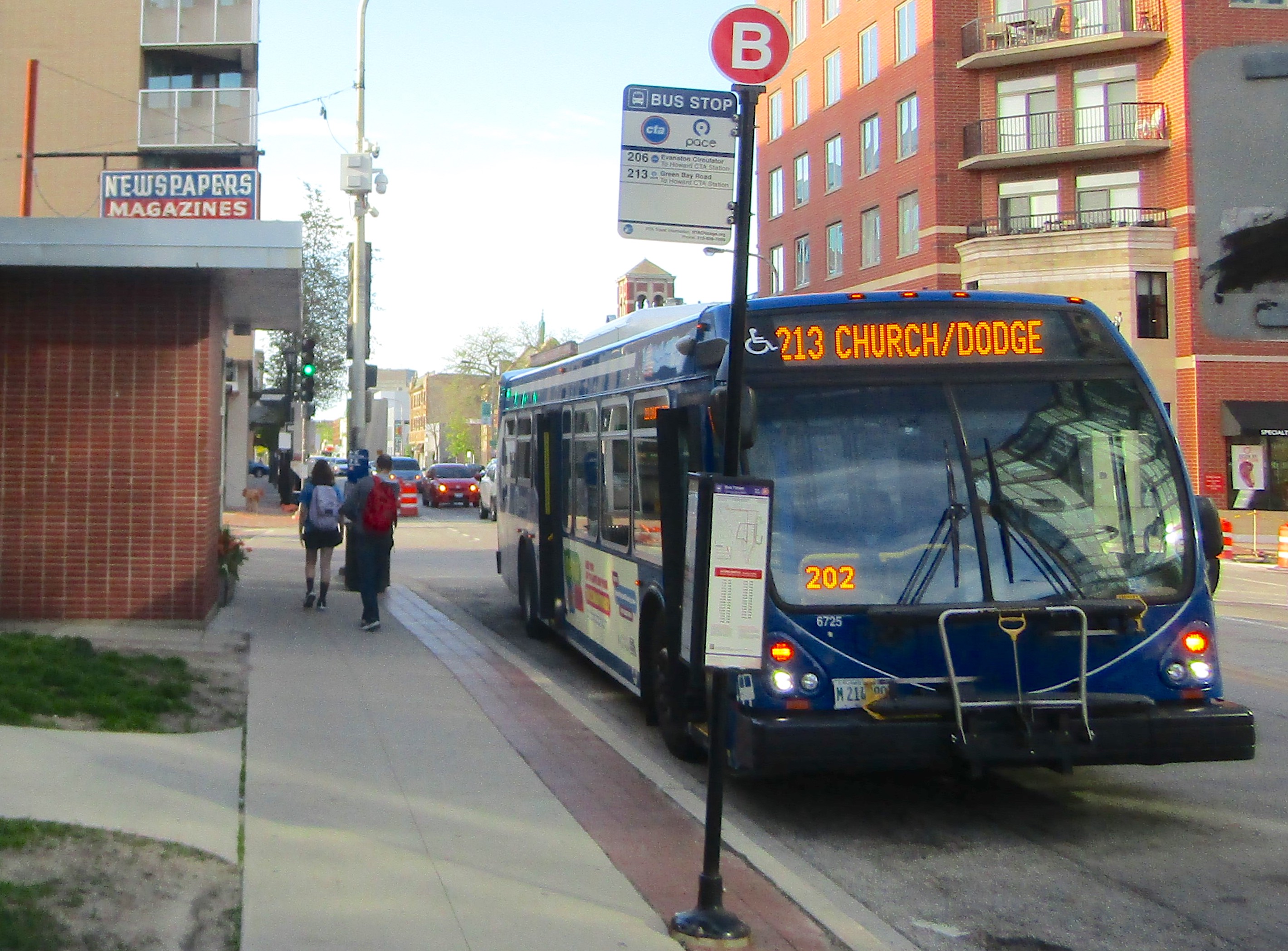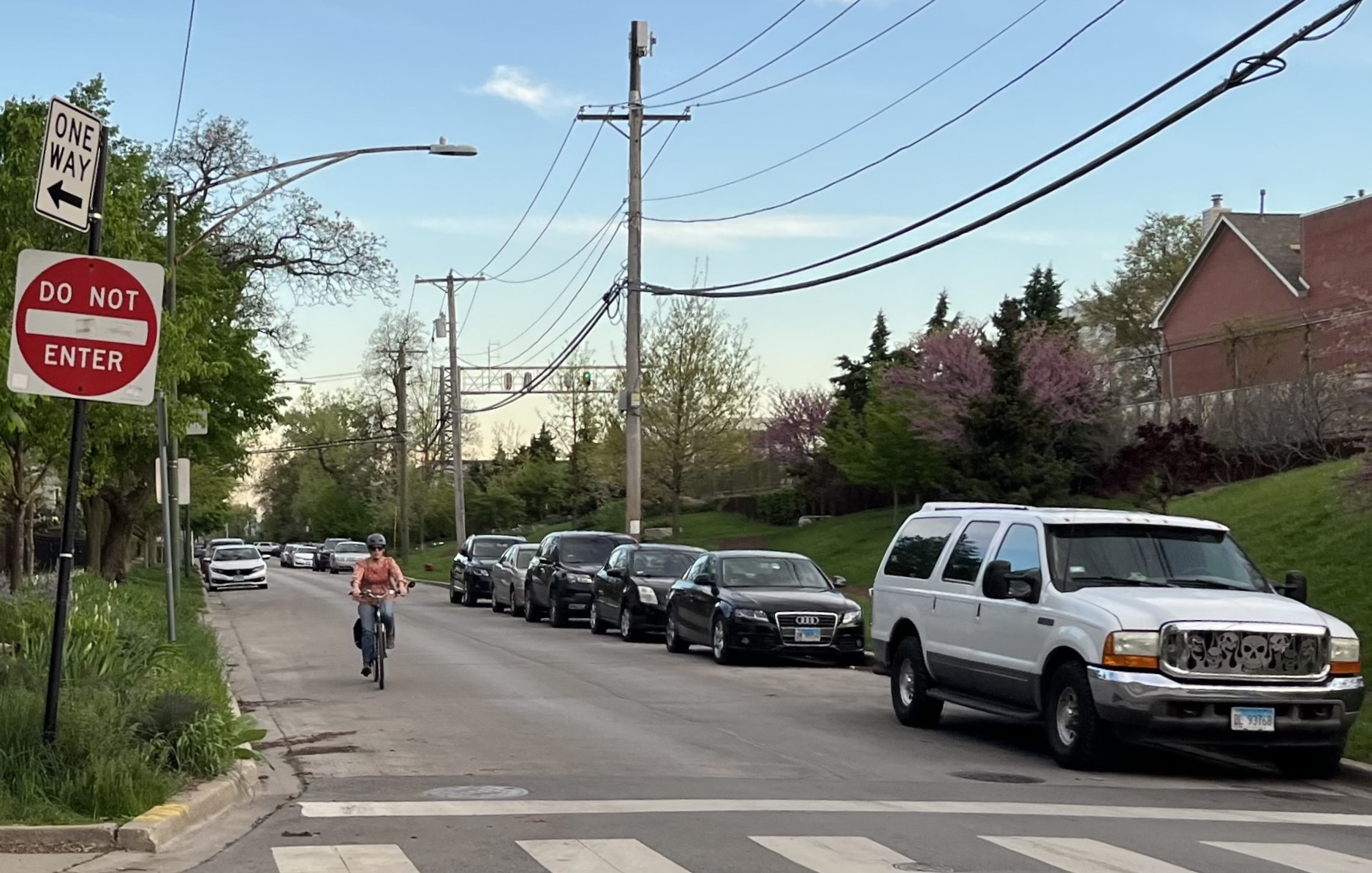Status Quo or Forward-Thinking: Which LSD Vision Will Prevail?
3:35 PM CDT on May 23, 2017

The LSD/Michigan/Oak area could get a Museum Campus-style transformation.
Last week the Illinois Department of Transportation and the Chicago Department of Transportation presented the first of two distinct visions for the future of the lakefront at the latest meeting on the North Lake Shore Drive Reconstruction Study. They revealed potential designs that generally keep the existing number of travel lanes open for motorists, rather than creating dedicated space for transit. Designs that prioritize greener modes won’t be shown until a future meeting.
The LSD study involves a complex planning process that must take into account the many different, and sometimes competing, uses of the highway and shoreline. As a result, the initial planning stages involved multiple private and public meetings that have dragged on for several years. But it appears that this session and others planned for later this year are a sign that the planning process is picking up steam.
Last week’s meeting started off with a short presentation to bring attendees up to speed about the project or refresh their memories from the last session in December. In response to previous feedback that some of the visuals presented at the meetings have been a little confusing, officials handed out an “Alternatives Key” to help people better understand the maps and distinguish whether a pictured roadway or bus lane is below ground, at street level, or elevated.

The day’s focus was on “Context Tailored Treatments” or as the presentation put it “Improvements that assume existing travel lanes are maintained (for the most part).” Therefore new configurations of LSD that included bus-only lanes, light rail lines, or managed travel lanes were not shown, but the maps did include bus-only queue jumps at key locations. Those more progressive alternates that prioritize transit are still in development and will hopefully be shown this fall.
The project as presented was broken down into three sections: Grand to Diversey, Diversey to Montrose, and Montrose to Hollywood. Three different conceptual alternatives were presented for each stretch: Corridor Modernization, prioritizing safety and bottleneck reduction; Compressed Roadway seeking to minimize ROW impacts; and the Frontage Drive concept envisioning something more akin to a proper highway.
It’s important to keep in mind that different elements from these conceptual alternatives can be mixed and matched based on community input and future analysis. IDOT and CDOT are specifically looking for feedback on issues, concerns, and preferences with regard to design elements, as well as locations where additional information and clarification is needed.
During the interactive portion of the meeting, attendees were placed in discussion groups, and I joined a group that focused on the Grand to Diversey segment. This is by far the busiest section of North Lake Shore Drive for all modes. Participants said they were excited about the possibility of expanding the lakefront through infill to create more parkland, such as a larger Oak Street Beach.

The possibility of redesigning the complex and dangerous intersection of LSD, Oak Street, and Michigan Avenue was also cited as a major opportunity. There’s a potential to create something on the level of Museum Campus, with full grade separation and new underpasses meant to cope with the high pedestrian and bike traffic. The conceptual drawings showed a new fountain near the intersection, but this space could be occupied by any number of things, including a new bus terminal.
Speaking of terminals, one of the three models included a small bus facility squeezed under a new LaSalle/LSD junction that could easily fit into other designs. Another striking feature of this proposals was two new pedestrian/bike bridges across Lincoln Park’s South Lagoon, linking Lincoln Park Zoo to nearby beaches.
After reviewing the Grand to Diversey designs, my group shifted to the Diversey to Montrose section which includes the redesign of the Belmont/LSD intersection. This is a challenging location, a tiny space that must accommodate high use from every mode. Thankfully, in all of the proposed scenarios, the monument to General Philip Henry Sheridan, located just north of the junction, would remain in place.
The most striking concept for Belmont had the northbound lanes of the Drive entering a tunnel under the junction while the southbound lanes were left in their current elevated state. While this would be a complex and expensive redesign, it’s the only one that retained the current right-of-way size.
The other two proposals encroach into the harbor space, requiring the relocation of parking and the local dog beach. However, unlike boat parking, all of the metered car parking would probably need to be replaced due to the city’s hated parking contract.
Interestingly, an idea is on the table to build a new junction at Addison that would allow northbound traffic to exit the Drive and southbound traffic to enter. Currently there’s a gate between Outer and Inner Lake Shore Drive at this location, only opened during Cubs games, that allows southbound drivers to exit. Allowing this move 24-7 would likely increase the amount of cars on Addison.

Finally our group checked out the stretch between Montrose and Hollywood. Positive changes proposed include the removal of on- and off-ramps at Wilson (since drivers can already enter and exit the Drive two blocks north and south at Lawrence and Montrose.) And unlike most alternatives shown at this meeting renderings floated the possibility of reducing the number of travel lanes from eight to six on this segment.
The designs also called for tightening the ramps and adding signals at all intersections to slow down motorists. Several ideas for a redesigned Hollywood terminus were also shown, including an at-grade option, but that aspect of the Drive project is mostly being handled by a separate team, which will be holding its next community meeting on June 6 at Senn High School.
At the end of the meeting the different discussion groups shared their impressions of the project. My sense is that there are two competing visions for the future of the Drive and the parkland it sits in. One point of view assumes that the car-centric status quo will be maintained. The other looks to a future where cars no longer dominate our world, but instead the more efficient and healthier modes of walking, biking, and transit are prioritized.
While it’s going to be a challenge to get progressive changes made to the Drive, it’s a battle worth fighting. Those of us who care about smart transportation need to make sure our voice are heard at the next reconstruction project meeting on July 12 at DePaul University. In the meantime, we need to leaving as much feedback as we can on the project website to show government officials that they need to show leadership by leveling the playing field in favor of sustainable transportation.
This post is made possible by a grant from the Illinois Bicycle Lawyers at Keating Law Offices, P.C., a Chicago, Illinois law firm committed to representing pedestrians and cyclists. The content is Streetsblog Chicago's own, and Keating Law Offices neither endorses the content nor exercises any editorial control.
Stay in touch
Sign up for our free newsletter
More from Streetsblog Chicago
Since COVID, Pace ridership has fared better on major corridors and in north, northwest suburbs than in south, west ‘burbs
The suburban bus system's top five busiest routes largely maintained their ridership rankings.
Due to incredible support from readers like you, we’ve surpassed our 2023-24 fundraising goal
Once again, the generosity of walk/bike/transit boosters is fueling our reporting and advocacy.
Which Metra corridor would become more bike-friendly and greener under a new plan? Ravenswood!
Thanks to plans to convert little-used parking spaces, the avenue is slated to get a new bike lane, and the Winnslie Parkway path and garden will be extended south.



